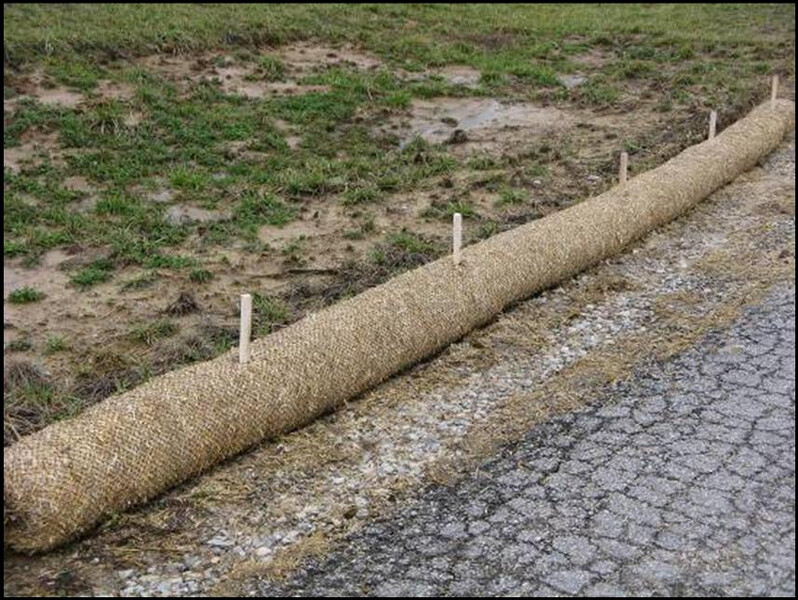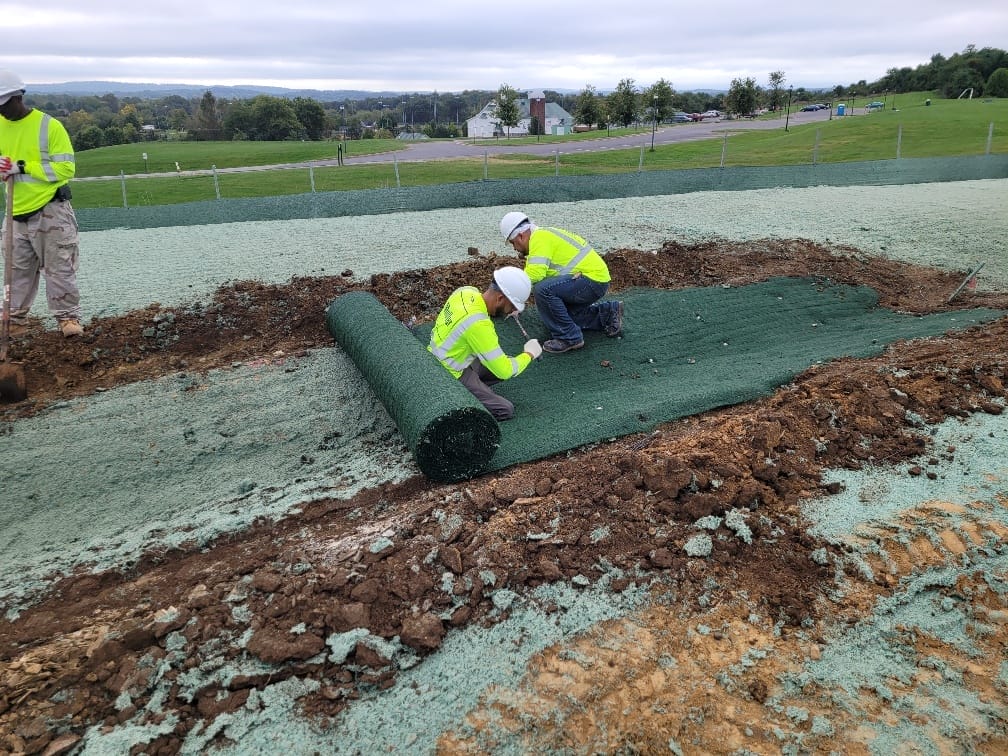Hydroseeding Solutions: A Greener Approach to Land Management
Wiki Article
Ideal Practices for Erosion Control in Building And Construction Projects
Are you working on a construction project and worried concerning disintegration control? In this short article, we will guide you via the ideal methods for stopping erosion on your website. erosion control. Obtain prepared to tackle disintegration head-on and make certain the success of your building and construction task.5 Important Erosion Control Techniques

To effectively regulate erosion on your construction website, you'll need to carry out important techniques such as incline stabilization and debris control steps. Slope stablizing is important in preventing dirt disintegration on steep slopes. You can attain this by utilizing methods like terracing, which involves producing horizontal steps on the incline to slow down water circulation and promote the absorption of rain. One more effective strategy is the usage of disintegration control coverings or floor coverings, which are positioned on the incline and aid retain soil particles while enabling plant life to grow. Debris control procedures are additionally vital to avoid sediment runoff right into neighboring water bodies. One effective technique is the installment of silt fencings along the perimeter of the building and construction site. These fencings act as barriers, capturing sediment-laden water and enabling it to settle before it reaches the water bodies. Furthermore, you can make use of sediment containers, which are short-term retention ponds created to trap sediment and permit water to slowly drain off. Implementing these important erosion control techniques will certainly assist minimize the unfavorable ecological influence of your construction project and make certain conformity with laws.
Reliable Debris and Drainage Administration

You can efficiently handle debris and drainage in your construction project by carrying out correct disintegration control measures. Sediment and runoff administration is critical to avoid erosion and safeguard the surrounding setting. One reliable measure is the setup of silt fencings along the border of the construction website. These fences help to consist of sediment and prevent it from entering nearby water bodies. Another important practice is the implementation of disintegration control coverings or floor coverings. These coverings provide a protective layer on bare soil, decreasing the effect of rainfall and stopping disintegration. Furthermore, the usage of sediment basins or sediment traps can assist to record sediment and avoid it from getting in stormwater systems. Normal maintenance of these actions is important to guarantee their effectiveness throughout the building project. This includes examining and cleaning debris basins and consistently replacing silt fences and disintegration control blankets as required. By implementing these disintegration control actions, you can effectively take care of sediment and overflow in your construction job, decreasing the influence on the atmosphere and abiding by governing demands.
Secret Considerations for Slope Stablizing
When thinking about incline stabilization, it is very important to evaluate the surface and recognize potential locations of instability. You require to thoroughly check out the slope's features, such as its drainage, angle, and structure patterns. Search for indicators of erosion, such as revealed roots, fractures, or down dirt. These indicators can provide you a concept of where stabilization procedures might be necessary.An additional choice is to plant plants on the incline, as the origins can assist anchor the dirt and control erosion. In addition, setting up erosion control coverings or mats can give instant protection while plant life comes to be well established.
It's critical to regularly keep an eye on the maintained slopes to ensure their efficiency. Keep an eye out for any type of signs of activity or erosion, and take prompt action if needed. Regular upkeep, such as checking and fixing any broken measures, is likewise necessary to make sure lasting security.
Ideal Practices for Plants and Soil Security
One reliable way to secure greenery and soil on inclines is by regularly inspecting for indicators of erosion and taking instant activity if needed. By being positive and observant, you can protect against more damage and guarantee the stability of the incline. Begin by evaluating the incline for any type of indicators of disintegration, such as exposed roots, bare soil patches, or sediment build-up near the bottom. It is critical metal flower bed edging to resolve the issue quickly if you discover any of these indications. Implement disintegration control actions such as mounting disintegration control coverings, mulching, or also creating retaining wall surfaces if required. Additionally, planting plant life can significantly help in supporting the soil. Choose native plants that have deep root systems, as they are much more reliable in protecting against disintegration. Ensure to regularly evaluate the get redirected here health of the greenery and offer required maintenance, like watering and fertilizing. Remember, erosion can quickly worsen and cause severe damage, so it's important to address it asap. By taking aggressive measures and routinely keeping track of the incline, you can shield the plants and soil, ensuring the lasting security of the area.Applying Appropriate Drainage Solutions
When it comes to handling water flow and stopping disintegration, recognizing these factors is crucial. Steeper inclines can lead to faster water flow, enhancing the risk of disintegration and flooding. On the other hand, gentler inclines enable water to flow much more slowly, minimizing erosion potential.Dirt type likewise affects water drainage system style. Various soil types have differing degrees of permeability, affecting how water is taken in and drained pipes. As an example, sandy soils often tend to drain faster due to their rugged structure, while clay dirts have a slower water drainage price due to their small nature. Recognizing the dirt type helps in choosing proper water drainage methods, such as utilizing absorptive products or mounting French drains. Furthermore, considering the soil characteristics helps avoid waterlogging, which can review cause poor plant development and damages to structures.
Verdict
In conclusion, when it concerns erosion control in building jobs, you must comply with these best methods. Execute reliable debris and overflow monitoring methods to prevent pollution. Think about incline stablizing techniques to make sure the stability of the website. Protect vegetation and dirt by utilizing proper actions. Develop proper drainage systems to handle water flow (erosion control). By following these crucial practices, you can successfully manage erosion and make sure the success of your construction task.To properly regulate disintegration on your building website, you'll need to execute necessary strategies such as slope stabilization and sediment control actions. Incline stabilization is critical in protecting against soil disintegration on steep inclines. Another effective technique is the use of erosion control coverings or floor coverings, which are placed on the incline and assistance maintain soil fragments while allowing plants to grow. Another alternative is to plant plants on the incline, as the roots can aid anchor the soil and control disintegration. Implement erosion control measures such as setting up disintegration control blankets, mulching, or even building maintaining wall surfaces if required.
Report this wiki page